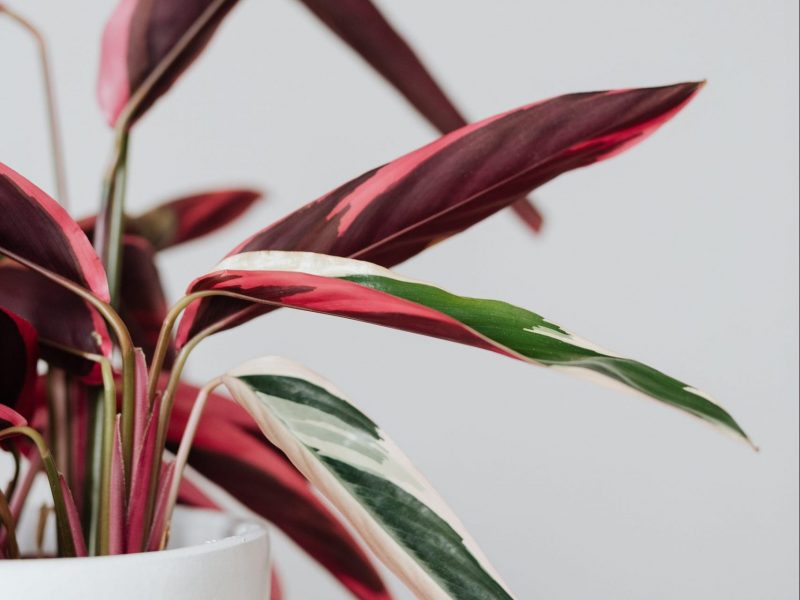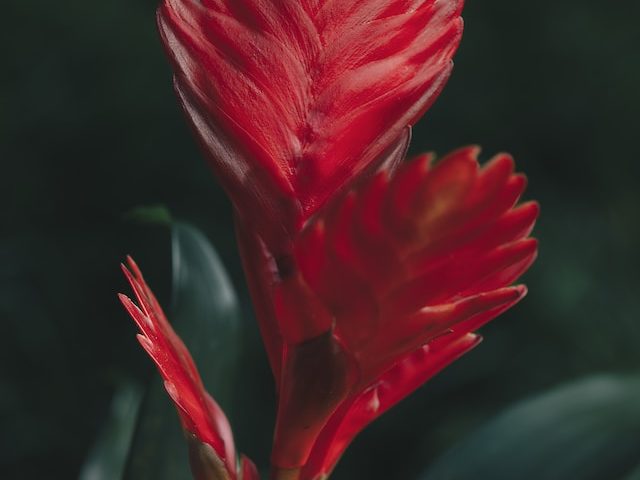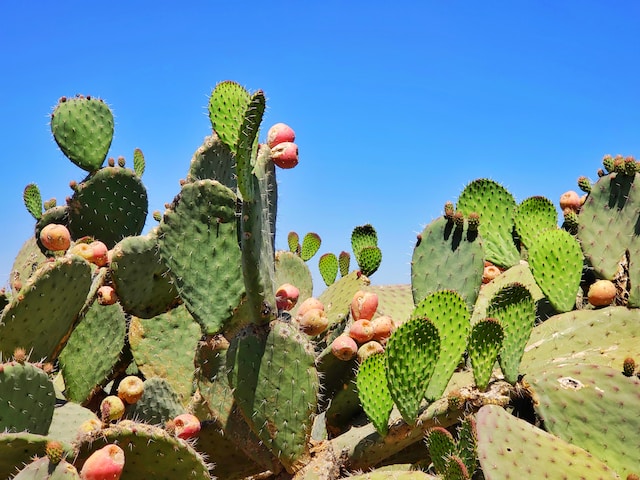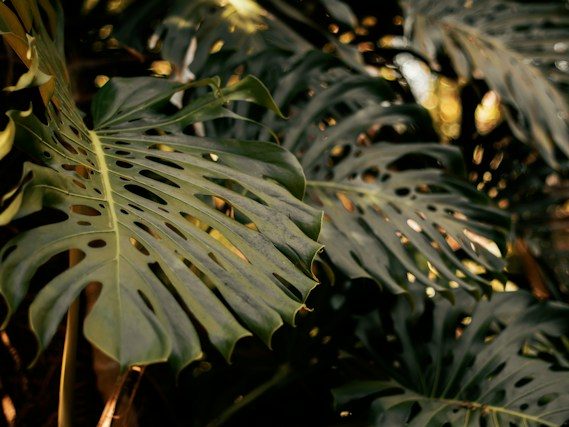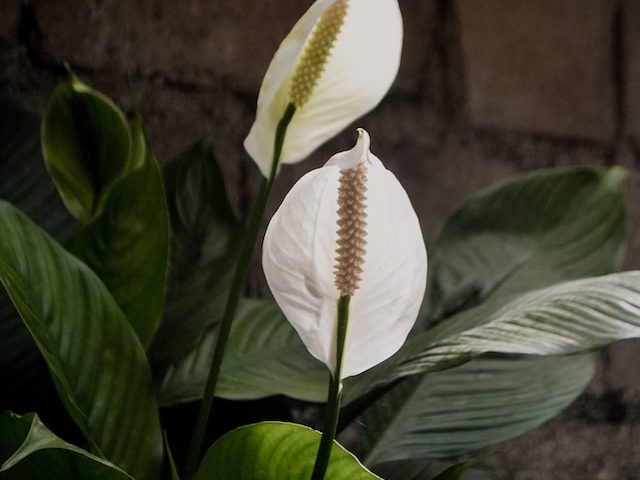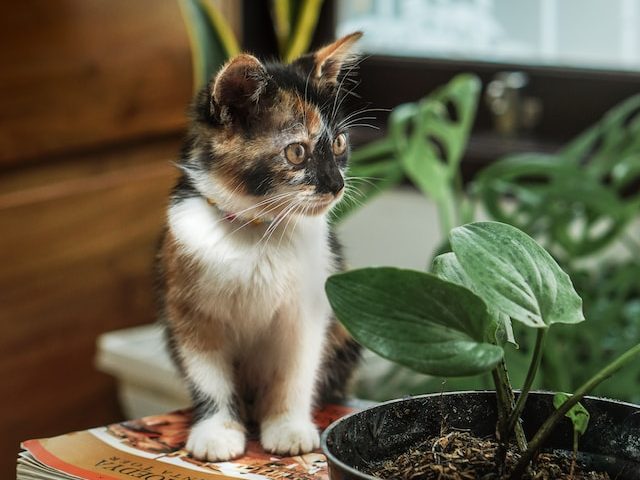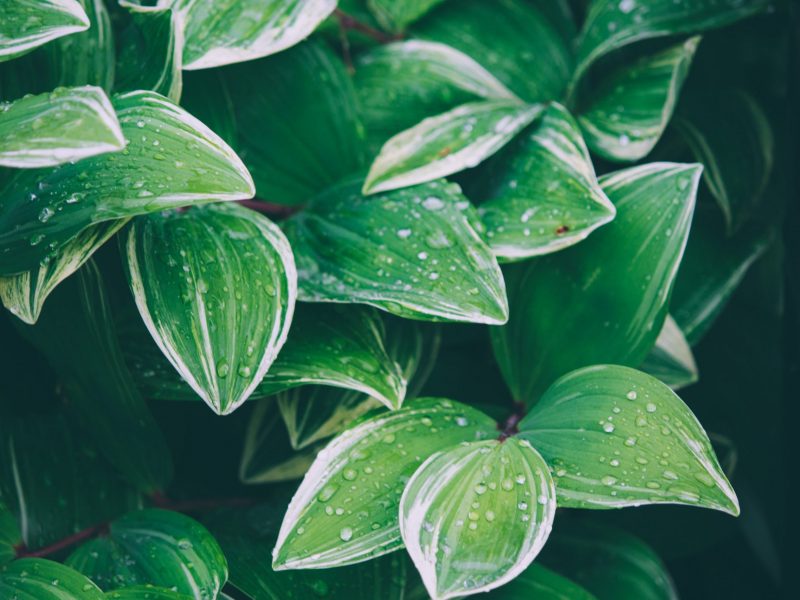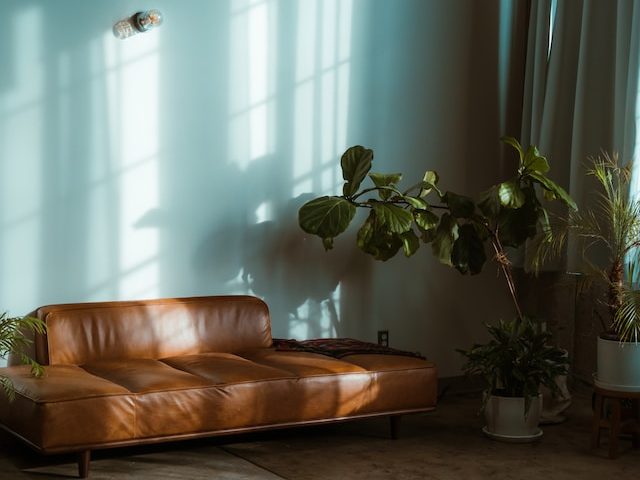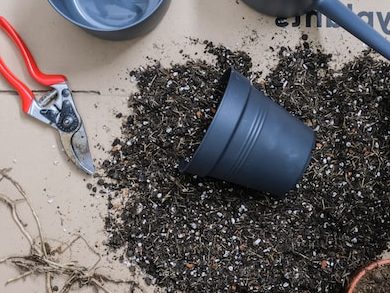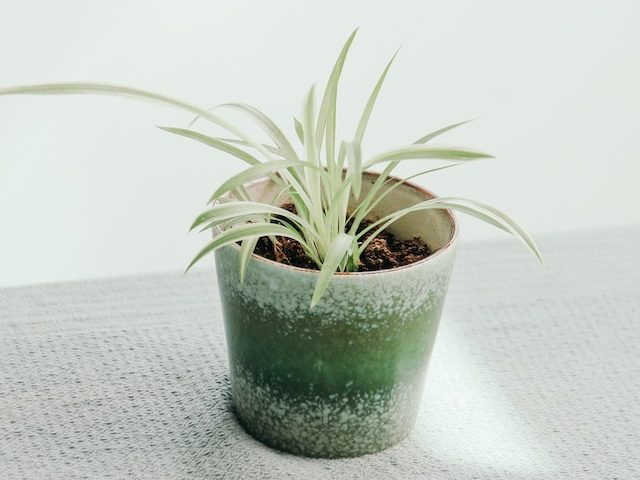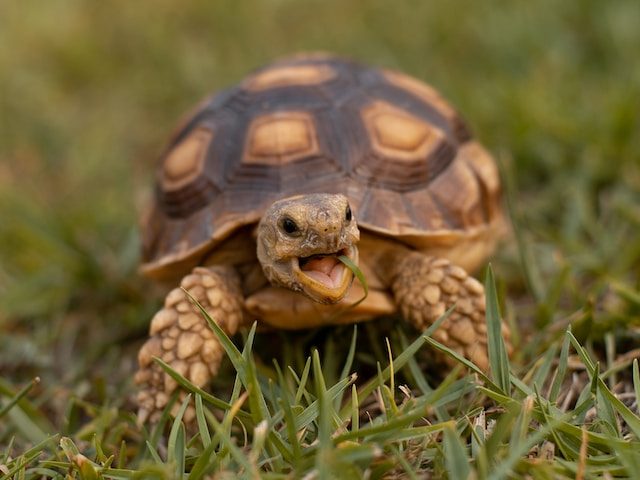Ripple Peperomia (Peperomia caperata)
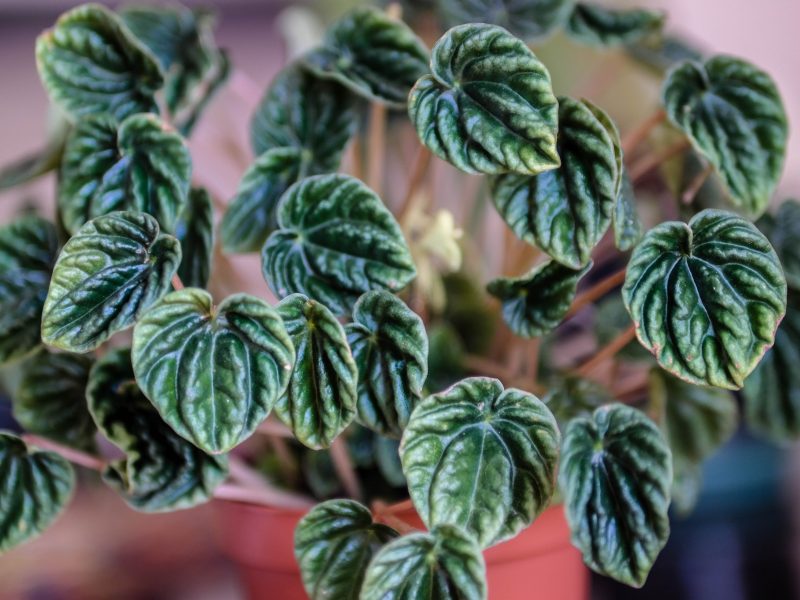
With unique rippled and wrinkled leaves, the Ripple Peperomia used to be quite a rare find but is now slightly easier to find in plant shops and nurseries worldwide. You’ll be pleased to know they are fairly easy to care for, as are most of the Peperomia varieties so given the right care, you shouldn’t run into too many issues.
Native to the rainforests of Brazil, the Ripple Peperomia is a species of flowering perennial that stays relatively small and compact. They are loved for their deep ridged rippled leaves that are so iconic of these plants. They might be small, but they sure know how to stand out!
There are several different varieties of Ripple Peperomia that all have a slightly different appearance but the overall care needed is the same. We’ve included more on the individual varieties such as the Emerald Ripple Peperomia later on in this care guide.
How to Care for a Ripple Peperomia
Peperomia plants in general are fairly easy to care for and are quite adaptable to a range of environments, the Ripple Peperomia is no different. There are only a few simple rules to remember to nail the basic care requirements.
These plants can adapt well to a range of light levels, even some lower light but the one thing you must avoid is harsh direct light in summer. This can very quickly scorch and dry out the leaves so make sure that any bright light is indirect.
The other thing that is crucial to note is to adjust your watering habits according to the seasons. Increase your watering in summer so that you’re averaging about once a week and drop back to only a couple times a month in winter to avoid overwatering.
Ripple Peperomia Overview
Origin: They are native to the rainforests of Brazil.
Latin Name: Peperomia caperata
Varieties: Emerald Ripple Peperomia, Red Ripple Peperomia, Silver Ripple Peperomia (Frost Peperomia) and Ripple Peperomia ‘Rosso’
Plant Family: Piperaceae
Difficulty Level: Easy/Medium
Appearance: The plant grows with a bushy habit and has small rippled leaves.
Height and Size: Maximum height and width of 10 inches x 10 inches (25cm x 25cm)
Growth Rate: Slow
Light Requirements: Medium to bright, indirect light is ideal but they can survive in some lower light areas (growth will be slower, however).
Water Requirements: Allow the water to dry out between waterings but not for extended periods of time.
Best Soil: A nutrient-rich, well-draining potting mix.
Ideal temperature: 60-80°F (15-26°C)
Fertilizing Routine: Apply a half-strength, water-soluble fertilizer once a month during spring and summer.
Ideal Humidity Level: 40-60% Humidity is the ideal range for a Ripple Peperomia
Flowering: Can sometimes grow inflorescences which are white flowers at the end of long thin red spikes.
Pruning: Only if there is an issue area.
Cleaning: Use a damp cloth to wipe dust and dirt from the leaves.
Propagation: Division of the mother plant is the most successful method.
Repotting Frequency: Every 1-2 years
Toxicity: Safe and non-toxic to pets and humans.
Pests: Risk of mealybugs, aphids, whiteflies, spider mites and scale insects.
Common Problems: Soft, limp leaves as well as brown and yellow foliage.
Ripple Peperomia Family
They belong to the Piperaceae plant family, also known as the Pepper plant family. It is a large group of over 3,000 different plant species.
Ripple Peperomia Appearance
Famous for their iconic think and waxy ripple-effect leaves, this plant almost looks as though its foliage is crinkled up. Their leaves will remain quite small, often the size of a dime.
Ripple Peperomia Varieties
There are several different varieties, each with their own unique leaves and colour.
Emerald Ripple Peperomia
This is a bushy and compact plant, with the iconic heart-shaped rippled leaves. Emerald Ripple Peperomias have dark-green leaves with long white blooms at the end of red stems that pop out across the plant. The Emerald variety of the Ripple Peperomia is definitely one of the most popular varieties and is slightly more common than the rest.
Red Ripple Peperomia
With dark red, shimmering and shiny leaves, the Red Ripple Peperomia is anything but boring! Looking to add a splash of colour to your home? This is a great way to do it.
Silver Ripple Peperomia (Frost Peperomia)
This variety gets its name from its silver leaves. Often the newer leaves will look more green and then will turn silver as they mature.
Ripple Peperomia ‘Rosso’
This variety has a lot of contrast in its foliage with dark red undersides with solid green on the top. The leaf shape is also a little bit different from the other Ripple Peperomia varieties as they are longer and more elongated rather than round and heart-shaped.
Ripple Peperomia Height and Size
They are compact plants with a bushy growing habit but won’t grow more than 10 inches x 10 inches (25cm x 25cm).
Growth Rate of a Ripple Peperomia
Ripple Peperomia plants are slow growers so don’t expect to see too many leaves popping up all the time. This does mean though that they are great for small spaces.
Flowers on a Ripple Peperomia
Ripple Peperomia plants grow thin white flowers at the end of long red spikes. These flowers are called inflorescences and are often quite insignificant. You can decide whether to leave them on your plant or remove them to conserve energy.
They tend to bloom in summer or early fall but it depends on the environment and plant age as they do only flower once they mature a little though so don’t be surprised if your plant doesn’t flower for the first few years.
Pruning your Ripple Peperomia
These plants don’t need regular upkeep when it comes to pruning and we only recommend if if there are issues with any of the leaves. If the majority of a leaf has turned yellow or brown, then we recommend pruning it from your plant to divert the energy to create new growth, rather than trying to revive the dying part of the plant.
Freshening up your plant and removing any dead leaves and straggly parts is a great thing to do in spring, ready for the warmer weather!
Cleaning your Ripple Peperomia
These plants attract quite a lot of dust and it can often wedge itself in the ripples on the leaves. This means that cleaning with a regular cloth won’t often do the whole job. Using a soft-bristled feather duster is a great way to give your Ripple Peperomia a proper clean.
You can also wash down the leaves with water to help them look fresher and unclog the pores. Avoid using any harsh chemicals when cleaning your Peperomia as this can damage the foliage. Dish soap is the only thing we recommend if you need something to remove dirt, dust or stickiness.
@plantopian_bonnie on Instagram
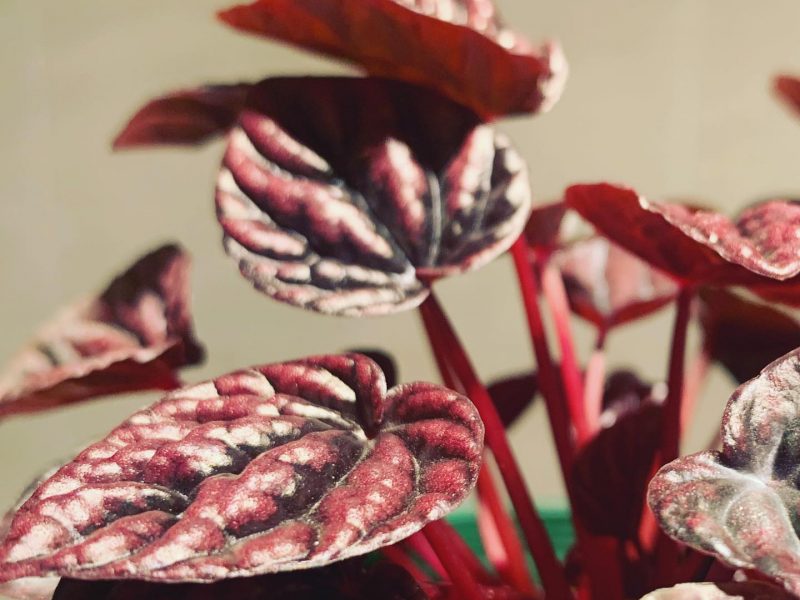
Light Requirements for a Ripple Peperomia
Ripple Peperomia plants can deal with quite a range of light levels, from low to bright, indirect light. The one thing you want to be careful of is too much exposure to direct light as this can scorch and burn their gorgeous leaves!
You can get away with some direct sun rays during winter as the sun is a lot weaker but avoid this at all costs during summer.
Whilst they can survive in low light, do note that you will see a drop in new growth and new leaves may be smaller.
Water Requirements for a Ripple Peperomia
During summer you want to be watering your Ripple Peperomia at least once a week to prevent the potting mix from drying out for too long. Cut back in winter to fortnightly as colder temperatures will increase the risk of root rot as your plant simply won’t need as much water.
Always check the soil moisture before watering to make sure that it’s time. If you use the top-down watering method, then all you need to do is check the top few inches of the soil with your finger to check if it has dried out. If you use the bottom-up watering method then a moisture meter or the lifting method are the best ways to monitor moisture levels.
Remove any excess water in the saucer or planter 15 minutes after watering. This will allow your plant to absorb as much moisture as it needs and prevents the roots from becoming soft and mushy.
Best Soil for a Ripple Peperomia
The main requirements for the soil of your Ripple Peperomia are that it’s loose, nutrient-rich and well-draining. Perlite is a great way at increasing drainage and aeration.
Ripple Peperomia Temperature Requirements
Average room temperature between 60-80°F (15-26°C) is best for your Ripple Peperomia and it’s important to avoid extremes.
Cold drafts coming from windows, external doors and air conditioning units can be harmful to your plant over time and can cause stunted growth, waterlogged soil and a loss of leaves.
But it’s not just cold fluctuations that are damaging as temperatures over 80°F (26°C) for extended periods of time can also dry out your plant quickly.
Using a digital thermometer is the most reliable way to check the temperature around your plant and will help alert you to any extremes.
Ripple Peperomia Fertilizer Requirements
Apply a well-balanced, fertilizer at half-strength once a month during the months of spring and summer. Weakening it to half-strength will help to avoid fertilizer burn as these plants don’t require much feeding. Do not feed during autumn and winter as your Ripple Peperomia will be in its dormant phase.
Ripple Peperomia Humidity Requirements
A humidity level of between 40% and 60% is the ideal range for your Ripple Peperomia. This is often the naturally occurring humidity as long as you are ventilating the room well so you won’t need to boost it too much. However, if the air is falling below that range then mist the leaves or use a humidifier every once in a while to give it a little boost.
@kebunsinar on Instagram
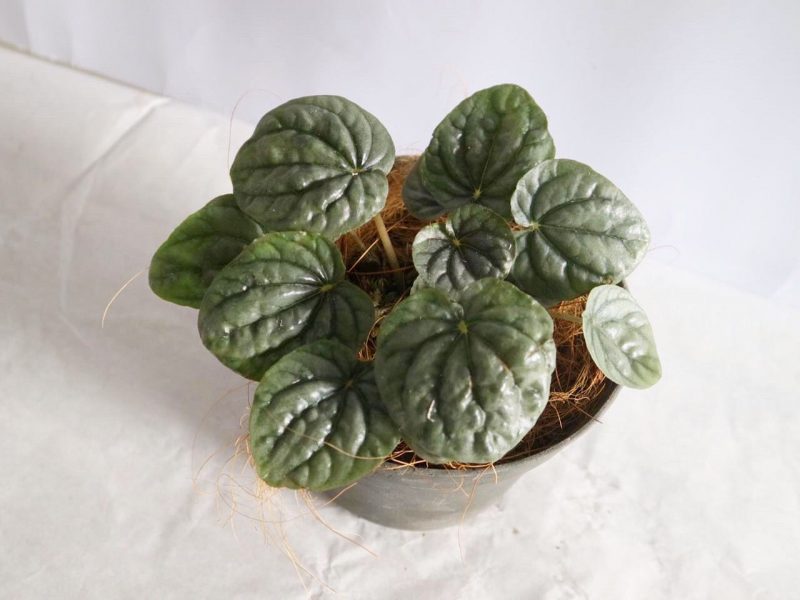
Propagating your Ripple Peperomia
The best ways to propagate a Ripple Peperomia is by dividing the offshoots into smaller plants or by taking a stem cutting. For both of these methods, place the cuttings and offshoots in water and after a few weeks you should start to see new roots appear. You want to make sure that you are switching out the water regularly to prevent it from stagnating.
Ideally, you want to propagate in late spring to make use of the sunshine and warmth but you can use a LED grow light and a heat pad if you are propagating in cooler temperatures.
Top tip: If you have a mature enough plant to be able to divide the mother plant into separate sections then we recommend doing this as the method is quicker and more successful.
Repotting your Ripple Peperomia
As Ripple Peperomia plants are slow-growers, they don’t require regular repotting. On average you’ll need to do this every 2-3 years, or earlier if you see signs that it is severely rootbound.
Signs to look out for include roots growing out of the drainage holes or popping out of the top of the pot. If you remove the plant from its pot, a rootbound root system will be extremely coiled up and there won’t be much soil left.
Another indicator that your plant is rootbound is that it is not producing any new growth during summer.
Ripple Peperomia Toxicity to Humans and Pets
Ripple Peperomia are non-toxic and safe for pets and children.
Treating and Preventing Pests
Although a pest infestation is rare, it can happen that you find mealybugs, aphids, whiteflies, spider mites or scale insects on your plant.
To treat the issue, isolate your plant from the rest of your houseplants, remove the worst affected areas and wash down your plant thoroughly. The next step is to start a treatment course of neem oil and an insecticide.
Make sure to check over all of your other houseplants for pests (or signs of them) as infestations can spread quickly.
Ripple Peperomia Common Problems
Why does my Ripple Peperomia have brown leaf tips?
The most common cause of brown leaf tips or edges on Ripple Peperomia plants is underwatering. Check the soil to confirm as you don’t want to increase watering if it doesn’t need it. A rare cause is a lack of humidity in which case we recommend misting the plant and buying a humidifier.
Why have the leaves on my Ripple Peperomia gone soft?
Soft mushy leaves on a Ripple Peperomia is a sign of consistent overwatering. Check the soil immediately to see any damage to the root system and trim away the worst affected areas. Replace the potting mix if waterlogged so that the plant can start to recover and hold off watering as frequently in future.
Why is my Ripple Peperomia wilting?
Wilting stems and leaves on a Ripple Peperomia are caused by watering issues – either overwatering or underwater. It’s kind of strange that the opposite factors can have the same effect so it’s important you figure out which is the cause. Take your plant out of its pot carefully and check the moisture levels in the soil. You may find that the root system is mushy (overwatering) or dry/ crispy (underwatering).
Why is my Ripple Peperomia losing leaves?
If your Ripple Peperomia is losing a few of its older lowest leaves it may be due to natural ageing as it prioritises new bigger growth. However, if the rate of dropping is more than one or two every few months then it may be a sign there is something wrong.
The main factors that can cause your Ripple Peperomia to lose leaves are: low temperatures, overwatering, shock or a pest infestation.
It’s important to get to the bottom of why your Ripple Peperomia is losing leaves, as if it’s losing them at a faster rate of new growth, soon you’ll be left with a plant with no leaves at all!
Why does my Ripple Peperomia have yellow leaves?
Overwatering is the most common reason why Ripple Peperomia plants develop yellow leaves. This can be either due to watering too much or too frequently, but can also be due to a lack of drainage that isn’t allowing the excess water to flow out of the pot.
Take your Ripple Peperomia out of its pot to inspect the root system and replace the soil if waterlogged. Don’t wait for it to naturally dry out as you risk more yellow leaves forming on your plant. You also want to make sure the drainage holes aren’t blocked by anything.
If you’re sure that watering is the cause, then too much or too little light, as well as a pest infestation might also be causing your Ripple Peperomia to develop yellow leaves.
Why is my Ripple Peperomia drooping?
The most common reason why Ripple Peperomia plants droop down is underwatering. This is often one of the earlier signs so you have probably caught the issue early which is great. Check the moisture in the potting mix to be sure and adjust your watering schedule moving forward to prevent your Ripple Peperomia from drooping.
Alongside underwatering, there are also a few other factors that can cause your Ripple Peperomia to droop including extreme temperatures, overwatering, shock and a pest infestation.
Why does my Ripple Peperomia have curling leaves?
The most common factor that can lead to your Ripple Peperomia curling its leaves is underwatering. This allows your plant to minimise any moisture loss.
If your Ripple Peperomia isn’t being underwatered, then there are a few less common reasons why they curl their leaves such as heat stress, low humidity levels and pests.



